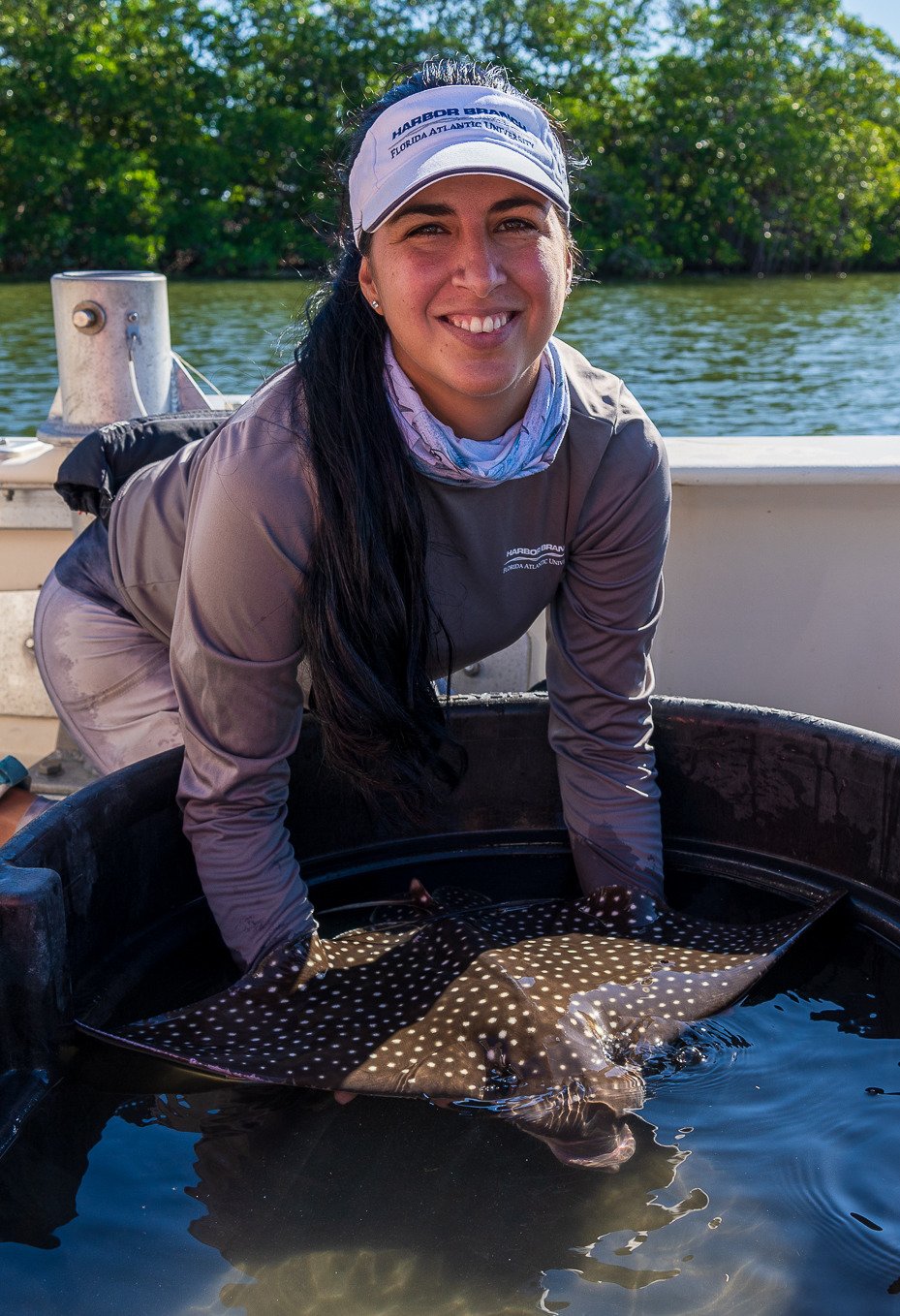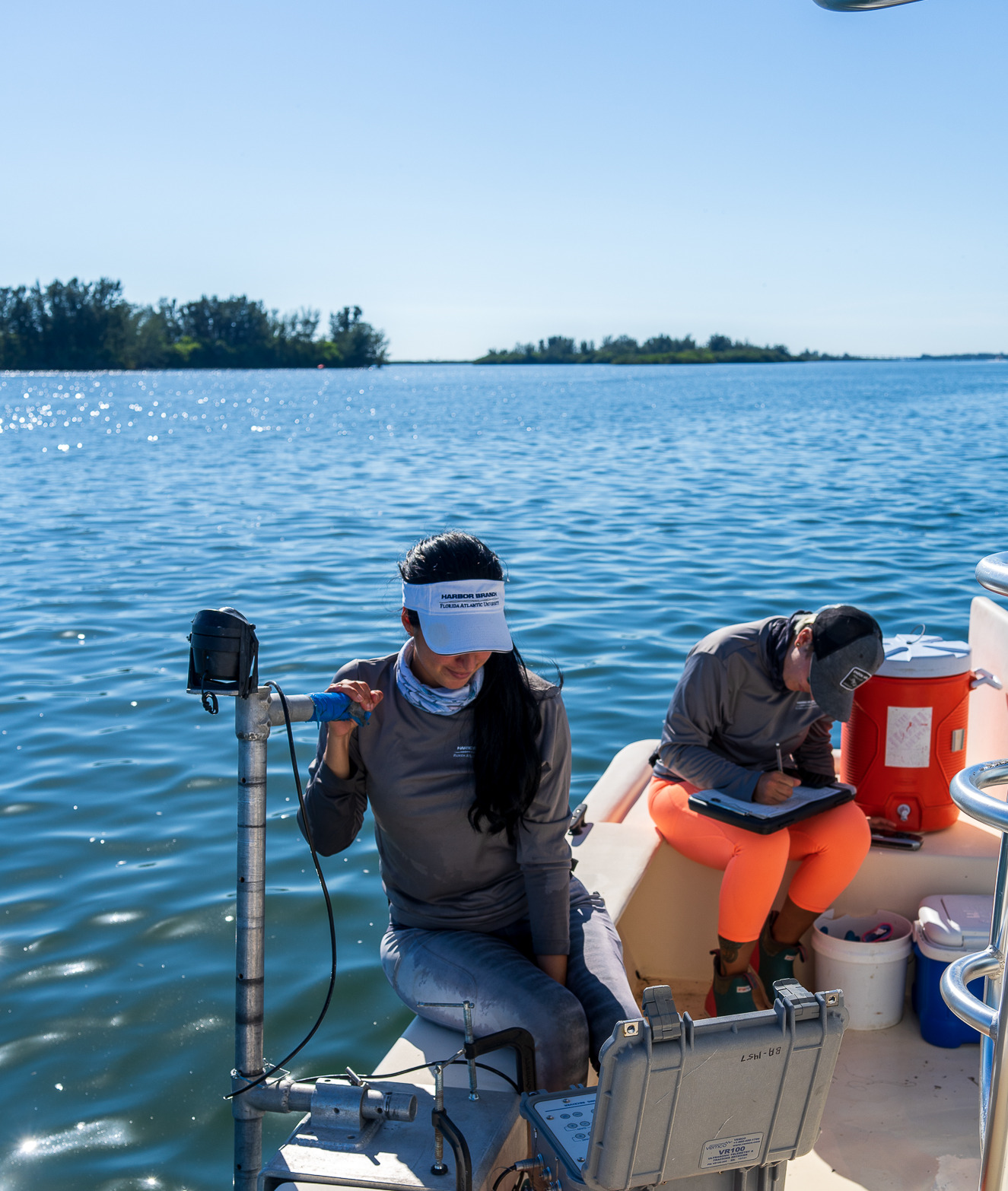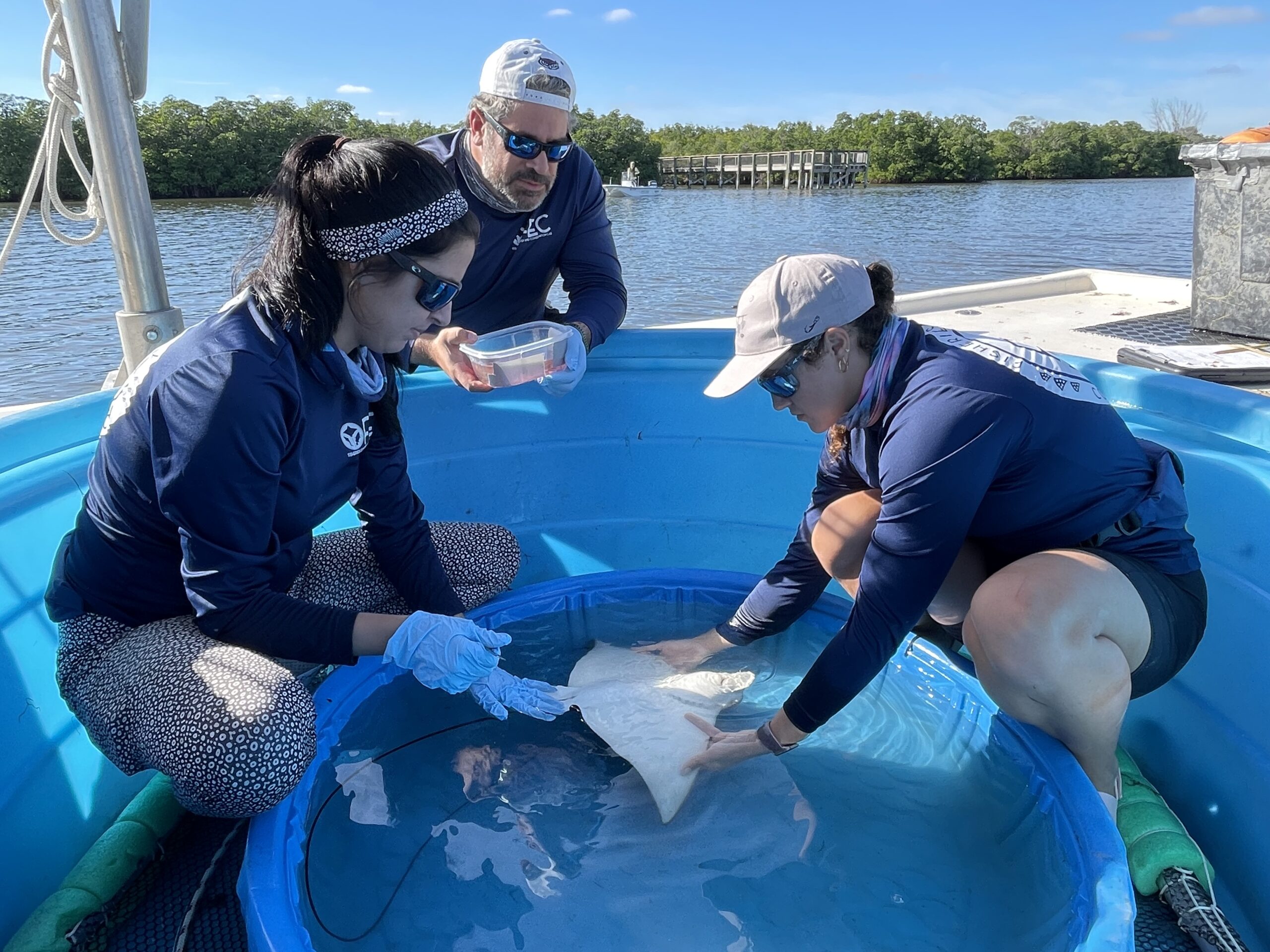Connecting the dots: revealing nursery hotspots one “ping” at a time
Soon after they are born, young eagle rays, as with other species, may rely on shallow, sheltered and food rich habitats for survival. These areas, known as nursery habitats, are essential for protection from predators, growth and ultimately recruitment to adult populations. 1. How do we know when and where they are born? 2. How do we track something you cannot see?
- To know when and where rays are born in Florida, we have been using data sets from long-term monitoring programs. These data sets have not only facilitated finding young eagle rays in Florida, but also allow us to determine the characteristics of nursery habitats (temperature, salinity, depth, type of bottom).
2. To know more about their behavior, movement and habitat use, we have been acoustically tagging and tracking young rays in the Indian River Lagoon and Sarasota Bay. Each ray is fitted with surgically implanted active and passive transmitters that emit a series of “pings” (sound pulses) into the surrounding water which are detected by receivers or “underwater listening stations”.

Young whitespotted eagle ray tagged and tracked in the Indian River Lagoon, Florida. Photo © Clark Morgan | Fisheries Ecology and Conservation Lab

Surgical procedure to insert internal acoustic tags. Photo © Clark Morgan | Fisheries Ecology and Conservation Lab
To study their fine scale movements, tagged rays are released and followed closely from a boat for approximately 24 hours using a directional hydrophone (that listens for the “pings”) and a compass. I record the direction, depth, time, and the exact location. With this information I “connect the dots” building the ray’s trajectory and quantifying the extent of the animal’s range and the main areas used.

Actively tracking a young whitespotted eagle ray. Photo © Clark Morgan | Fisheries Ecology and Conservation Lab
Why are we interested in nursery habitats? Since eagle rays can use large areas throughout their life and protecting vast areas is ineffective, identifying these nursery areas is essential to the recovery of populations worldwide. Thanks to the support of Save our Seas Foundation we have been able to continue tracking young eagle rays in Florida’s East and West Coast and we are excited to share our findings with you.

Belly up! Young eagle ray in tonic immobilisation prior to tag insertion. Photo © ChangingSeas_SouthFloridaPBS
The village behind this project:
- Fisheries Ecology and Conservation Lab: Matthew Ajemian, Breanna DeGroot, Mike McCallister, TJ Ostendorf, Clark Morgan, Sarah Webb and Cecilia Hampton. Former: Brianna Cahill
- Collaborators: Kim Bassos-Hull, Krystan Wilkinson, Pete Hull, Dean Dougherty, Greg Byrd, Cody Cole and Val Hagan
- FAU-Harbor Branch staff: Jimmy Nelson, Matt Roy and Jill Sunderland
- Volunteers/research colleagues: Elizabeth McCabe, Anna Knochel, Savannah Ryburn, Salome Jaramillo, Deanna Webber, Bobbie Crouch, Amanda Matthews, Natalia Jaworski, Victoria Goldner, Matthew Larsen, Brianna Davis and many more.
